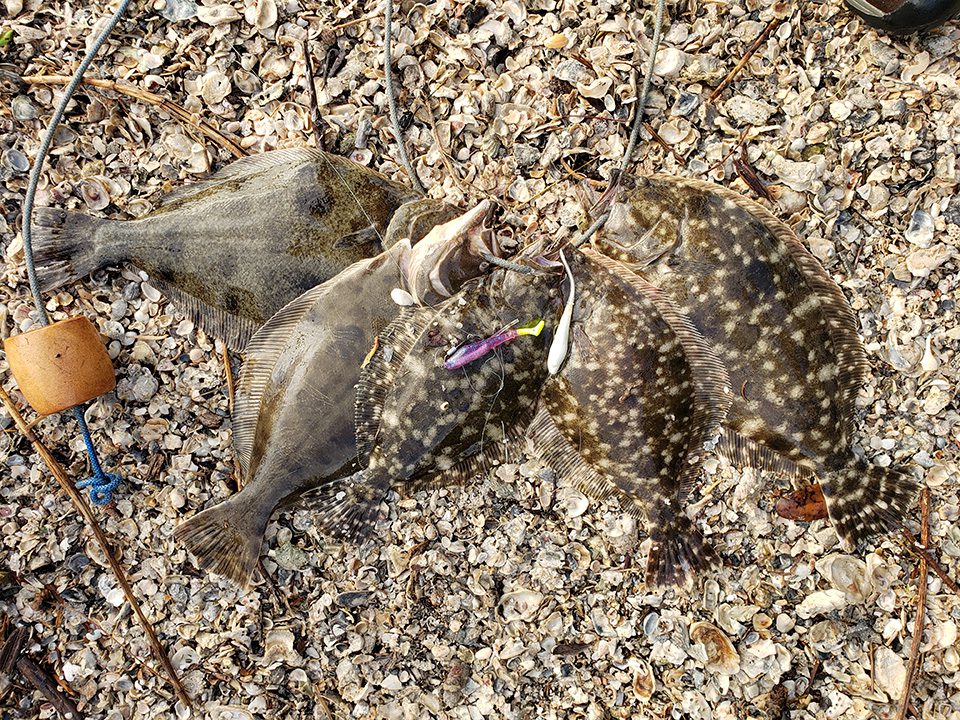By Capt. Michael Okruhlik. Photo courtesy of Controlled Descent Lures
As the temps fall, fishing gets hotter. The options are tough to choose from. There’s the flounder run, schools of trout and reds under flocks of gulls, or the preliminary to giant trophy trout time on the Texas coast.
The flounder migration is definitely a staple of fishing in Texas this time of year. The fish travel through all the passes on their way to spawning ground in the Gulf of Mexico, so they are easy to find. Also, they feed aggressively on an abundance of baitfish pushing out of the bays toward the open Gulf. When it all aligns and you find yourself in the right place at the right time, the action can be outstanding.
When I focus on flounder, my presentation is much different than my redfish and trout techniques. For flounder, I like a Controlled Descent Tandem Rig. Using scents gives you an advantage for flounder, and scent gels can be injected into these tandem rigs.
With two soft plastics fished at the same time, you can fish a heavier leading lure and stay in contact with the bottom, where flounder like to bury themselves and ambush prey. The second lure will float off the bottom, where it gives a more realistic baitfish impression. To fish this rig properly, keep your rod tip down, and use a sideways motion to twitch the leading lure across the sand.
One of the most exciting inshore bites this time of year involves chasing the birds. Finding trout and reds smashing shrimp under feeding gulls can really get your heart pumping from the visual excitement. When it’s right, it can lead to non-stop fish on every cast. This time of year it is common to find large trout schooling.
When fishing the birds, I use a ¼- to 3/8-ounce jighead on my soft plastics. The more skittish the fish and birds, the heavier head I will use. I do this to increase my casting distance. If you get too close, the schools will break up. To avoid disrupting actively feeding fish, long casts are often necessary.
In the melee, a durable soft plastic is important. I also like to smash the barb on my hooks to make unhooking fish quicker and easier. Many times the surface activity is short lived, so efficiency is important to maximize the number of fish you can pull off a school.
At some point in December, we will transition from flounder and birds to the trophy trout bite, which will continue through mid-spring. With cool water, most of the baitfish will have left the bays and the big trout will be hungry. No other time of year offers so much potential for catching big trout on artificial lures.
Capt. Michael Okruhlik is the inventor of Controlled Descent Lures and the owner of www.MyCoastOutdoors.com.
